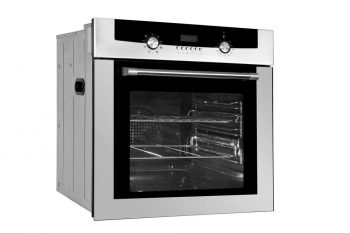
Understandably, the task of moving a refrigerator can be daunting due to its size and weight. However, it’s not just the physical challenge that should concern you. The orientation in which a fridge is moved can significantly impact its functioning and lifespan. So, what happens if you lay a refrigerator down?
Laying a refrigerator down can lead to potential problems such as oil leakage from the compressor into the cooling lines, damage to internal and external parts, and refrigerant blockage. If you must lay it down for transport, do so on the side opposite the compressor lines and let it stand upright for at least 3 hours before plugging it in. However, it’s always recommended to transport a refrigerator in an upright position to avoid these issues.
Compressor Oil Leakage
The most significant risk of laying a refrigerator down is the potential for oil leakage from the compressor. The compressor is filled with oil that is held in place by gravity. When the refrigerator is placed horizontally, the oil can flow into the cooling lines, causing clogs. For instance, if the compressor lines are attached to the left side, laying the refrigerator on its right side can lead to oil leakage.
Damage to Internal Parts
Aside from oil leakage, placing a refrigerator flat on its back can damage its internal parts due to the weight of the fridge. For instance, the compressor is usually supported by springs or rubber feet. When the refrigerator is placed on its side, the compressor mount’s springs or rubber feet may strain, crack, or bend, which can cause the fridge to make noise when the compressor starts.
Refrigerant Blockage
Another potential danger of laying a refrigerator down is refrigerant blockage. The oils inside the compressor can flow into the gas pipes and cause blockages. This can disrupt the refrigeration cycle, affecting the refrigerator’s ability to cool efficiently.
Damage to External Parts
Laying a refrigerator on its side can potentially damage the hinges, doors, or door handles. This is especially true for refrigerators with French or side-by-side doors, where the weight distribution is not even.
How to Properly Transport a Refrigerator
Given these potential dangers, it’s clear that it’s always best to transport a refrigerator in an upright position. However, if you must lay it down, follow these precautions:
- Lay the refrigerator on the side opposite the compressor lines.
- Protect the refrigerator’s surface from scratches and damage by covering it with moving pads.
- Use the appropriate equipment, such as an appliance dolly or trailer, to move the refrigerator safely.
- Let the refrigerator stand upright for at least 3 hours before plugging it in and turning it on.
Reviving a Refrigerator After Being Laid Down
If a refrigerator has been laid down, it should be properly positioned by placing it in an upright position. To revive the refrigerator, let it stand upright for at least the same amount of time it was on its side before plugging it in. This allows the oil and refrigerant to settle back into their proper places, preventing potential damage to the compressor and cooling system.
In conclusion, while it’s possible to transport a refrigerator horizontally, it’s not recommended due to the potential damage to both internal and external components. Always consult the manufacturer’s guidelines for specific information about your refrigerator model and follow their recommendations.
Frequently Asked Questions
Can I plug in my refrigerator immediately after moving it upright?
No, it’s recommended to let your refrigerator stand upright for at least the same amount of time it was on its side before plugging it in. This allows the oil and refrigerant to settle back into their proper places, preventing potential damage to the compressor and cooling system.
What side should I lay my refrigerator on if it’s unavoidable?
If it’s necessary to lay your refrigerator down, you should lay it on the side opposite the compressor lines. This minimizes the risk of oil leakage into the cooling lines.
What can I use to protect my refrigerator from scratches and damages during the move?
You can use moving pads to cover and protect the surface of your refrigerator from scratches and damage during the move.
Is it safe to transport my refrigerator in a moving van?
Yes, it’s safe to transport your refrigerator in a moving van, provided it’s kept in an upright position and secured properly to prevent it from tipping over.
What equipment is recommended for moving a refrigerator?
An appliance dolly or trailer is recommended for moving a refrigerator. These equipment types are designed to handle the weight and size of large appliances like refrigerators.












